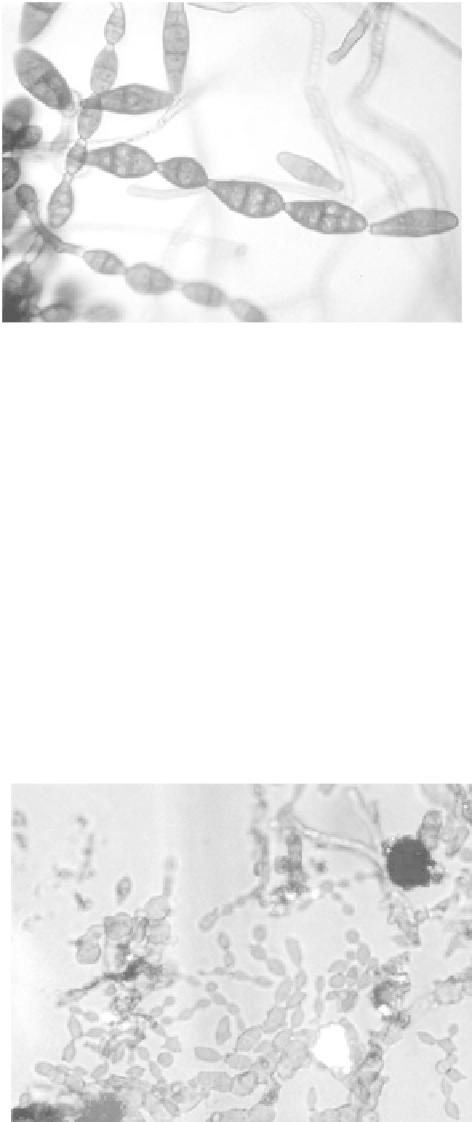Environmental Engineering Reference
In-Depth Information
Figure 6.4
Asexual spores of
Alternaria
. (Courtesy of University of Toronto.)
However, spores with surface ornamentation and nonspherical shape tend
to experience significant drag and thus settle out more slowly than Stokes
Law calculations would predict. Settling times for particles of different aero-
When spores are released, they may become airborne as single structures
or in strands of multiple attached spores. The latter is commonly the case
with asexual spores of
. Such clus-
ters may have aerodynamic behavior characteristics that differ from single
spores. In theory, they should settle out more rapidly.
As is the case with most species
Penicillium, Aspergillus,
and
Cladosporium
of living things, fungi produce an excess
of reproductive propagules to ensure survival. Not surprisingly, many do
not survive the often harsh environmental conditions that exist in the time
period between their release from mycelia and their deposition on substrates.
Ultraviolet light and low atmospheric moisture pose significant risks to their
Figure 6.5
Asexual spores of
Cladosporium
. (Courtesy of University of Minnesota.)

